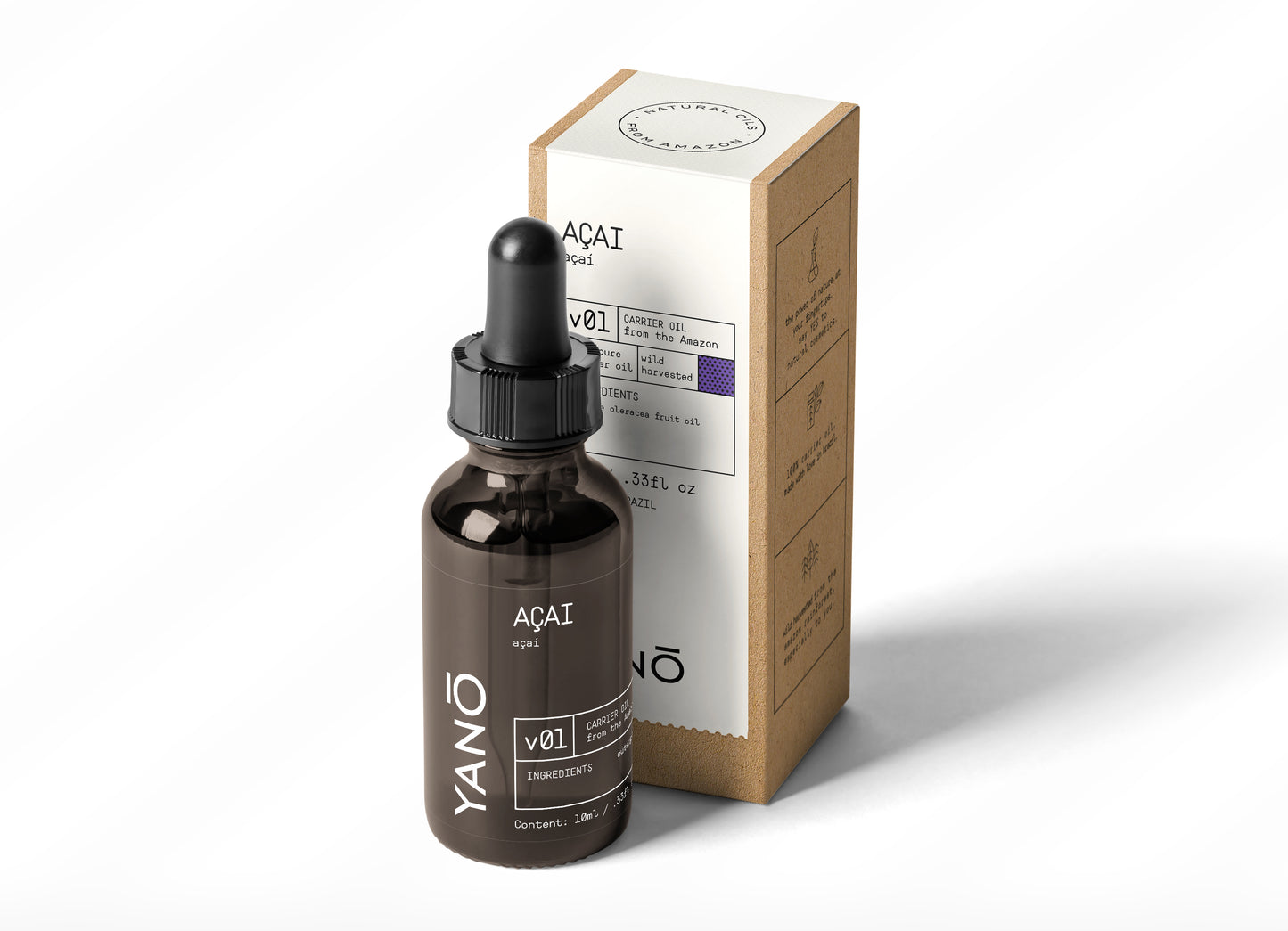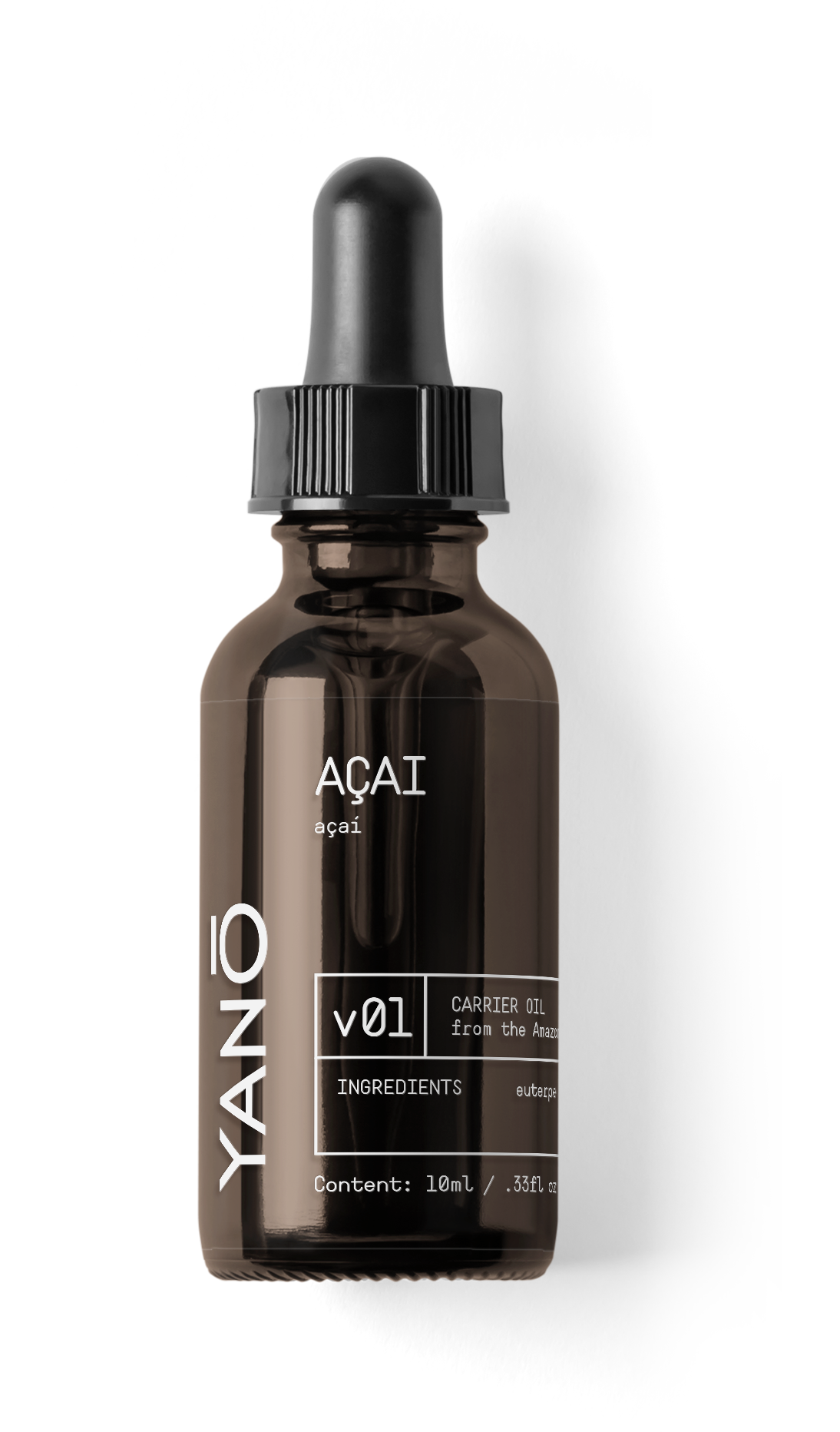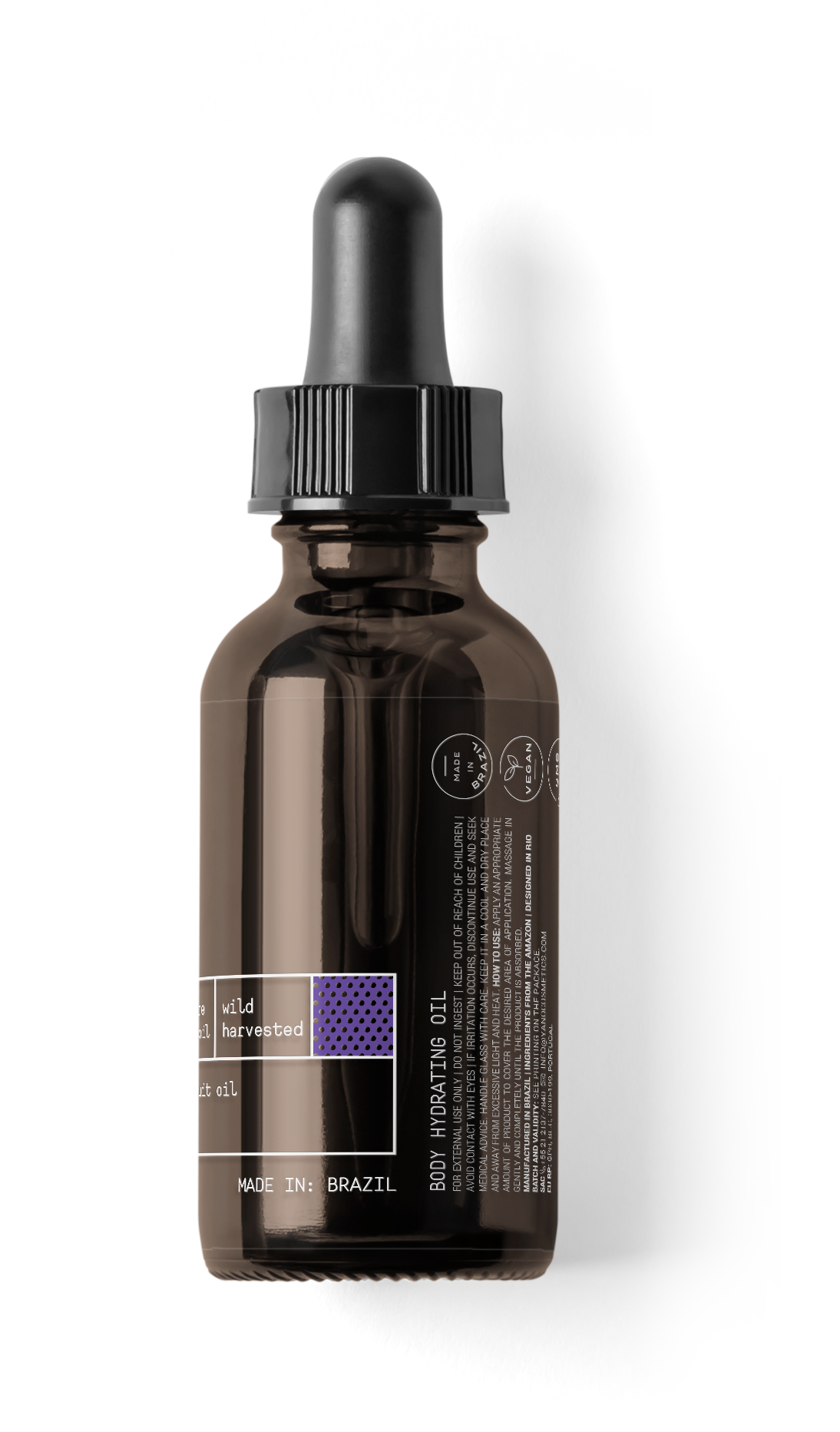Yano Cosmetics
Acai Carrier Oil
Acai Carrier Oil
Couldn't load pickup availability
EUTERPE OLERACEA
Uncover the secret of Brazilian beauty with Açaí Carrier Oil! Rich in antioxidants, vitamins, and essential fatty acids, this oil deeply nourishes both skin and hair. Experience radiant skin and luscious locks with Açaí Carrier Oil!
Açaí oil is abundant in anthocyanins, phytosterols, and essential fatty acids like omega-3, omega-6, and omega-9. These compounds are known for their anti-aging properties, making the oil a popular choice for skincare and haircare alike.
The Açaí Carrier Oil from Yano Cosmetics is 100% pure, natural, and organic. Its composition is free from preservatives, dyes, artificial fragrances, parabens, silicones, and sulfates. The product is vegan, cruelty-free, and free from animal-derived ingredients.
Share
Handling Instructions
Handling Instructions
Due to their natural and 100% pure composition, our oils may partially or fully solidify in colder temperatures. If this occurs, gently warm the bottle in a water bath or leave it at room temperature until the oil returns to its liquid state.
Properties
Properties
Hair
Intensive Moisturisation
Damage Protection
Frizz Control
Growth Stimulation
Shine and Vitality
Face
Facial Moisturiser
Make-up Remover
Night Treatment
Body
Cuticle Treatment
Body Moisturiser
Massage Oil
DataSheet
DataSheet
- Product: Açai carrier oil
- Packaging: Amber glass bottle with pipette and silicone dropper.
- Content: 10ml of carrier oil
- Origin: Brazil
- Scientific name: Euterpe oleracea fruit oil.
- Extraction type: Cold pressed.
- Composition: 100% pure Açai carrier oil.
Origin
Origin
Brazil
How To Use
How To Use
- Topical Use - 1ml
- Facial Massage - 5ml
- Scalp Massage - 5ml
- Body Massage - 5-30ml
- Baths - 1 tablespoon of carrier oil
Botanical Aspects
Botanical Aspects
The species Euterpe oleracea, known for its typically tropical nature, has an extensive geographical distribution, ranging between latitudes 10° North and 20° South and longitudes 40° East and 70° West, as pointed out by Lleras et al. in 1983. This palm tree is predominantly found in northern South America, encompassing countries such as Panama, Ecuador, and Trinidad, and extending through the humid lowland and mountain forests in regions like French Guiana, Suriname, Venezuela, and Colombia, according to Henderson in 2000.
In Brazil, its habitat primarily extends along the eastern side of the Amazon, mainly covering the area of the Amazon estuary in the states of Pará, Amapá, and Maranhão. Its presence is also noted in the North and Northeast regions, including Tocantins and Mato Grosso, as documented by Cymerys & Shanley in 2005.
Characterized by forming large clumps in the adult phase, Euterpe oleracea can have up to 45 stems (stalks) per clump, distributed in seven growth stages. However, it is rare to find specimens with a single stem. The palm stem is smooth, cylindrical, ringed, and erect, occasionally curved, with a fibrous texture and no branching. This structure can reach heights of up to 30 meters and diameters ranging from 12 to 18 centimeters. Henderson (2000) also notes that along the stem, scars from leaves that have withered and fallen mark its surface, creating a pattern of nodes and internodes.
The crown of leaves, or the palm's canopy, consists of twelve to fourteen pinnate leaves, which have hanging segments and are arranged spirally, reaching about 3.5 meters in length.
Combinations
Combinations
Rosemary, sweet orange, lemongrass, Tahiti lemon, mandarin, tangerine.
Do It Yourself
Do It Yourself
Medicinal clay, neutral base cream, massage oil, neutral base shampoo, and essential oils.
Fun Facts
Fun Facts
The açai, known by various names such as açai-do-pará, common açai, juçara, açai palm, touceira açai, and lower Amazon açai, carries in its essence a rich tapestry of stories and traditions that trace back to the indigenous origins in the region where Belém is situated today. A local legend tells the story of a tribe whose rapid population growth threatened to surpass food availability. Faced with this crisis, the tribe's chief made a drastic and tragic decision: to order the death of all newborns to avoid famine. Among those affected was the chief's daughter, Iaçã, who, even while pregnant, saw her future daughter being sacrificed. Desperate, Iaçã pleaded with the god Tupã for a solution to her people's suffering. One night, guided by the cry of a child, she ventured into the forest, only to be found dead the next day at the foot of a palm tree, her eyes forever fixed on the small fruits hanging above her. The discovery of these purple fruits, which became the staple food of the tribe, ended the era of sacrifices. The inversion of Iaçã's name gave rise to the term "açai," symbolizing the transformation of despair into sustenance. The origin of the name "açai" comes from the Tupi word "yaçaí," which means "fruit that cries," a poetic reference that may allude to the legend of its discovery or to the characteristics of the fruit itself. According to Ferreira (2010), this etymological connection reinforces the region's cultural and historical depth of the fruit. The relationship of indigenous populations with açai predates the arrival of Europeans, being a central element in the celebrations and diet of pre-Columbian communities. They consumed a wine made from açai fruits during important festivities. This tradition continues today, with the Amazonian population incorporating açai as a daily diet. This ancient practice not only persisted over the centuries but also expanded, highlighting the vital role of açai in the Amazon region's culture, economy, and diet.






